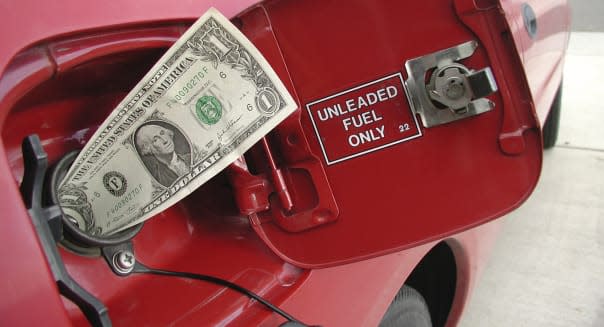4 Ways Inflation Still Threatens Your Finances

Inflation hasn't been a major problem in the United States for years. According to government figures from the Bureau of Labor Statistics, the inflation rate bottomed out near zero percent in 2008 and has risen at a modest 1.5 to 3 percent pace ever since. Overall, inflation has risen a total of about 27 percent over the past 10 years -- which may sound like a lot, but it isn't, and for the health of the whole economy, some inflation is essential.
Still, for millions of Americans, making ends meet just seems to get harder and harder. Looking at the prices many people have paid for vital products and services over the years is an eye-opening lesson on why even low inflation poses a financial threat for many households.
1. Gasoline: Up 121 percent
Gasoline prices are one of the most visible indicators of inflation, and prices at the pump have risen a lot further than the overall inflation rate. Since 2003, when gas prices were around $1.59 per gallon , what you pay for a gallon of gasoline has more than doubled to $3.52, according to figures from the Department of Energy and AAA.
Some drivers have been able to offset the increase by switching to more fuel-efficient cars. But typical drivers using 550 gallons of gasoline every year are spending more than $1,000 more annually than they did 10 years ago just to keep their cars fueled up.
2. Milk: Up 29 percent
Milk prices haven't gone up nearly as much as gasoline, although they've outpaced overall inflation by a small margin. In 2003 milk cost about $2.67 per gallon, according to figures from the Bureau of Labor Statistics, and they've risen to $3.45 as of August.
%VIRTUAL-article-sponsoredlinks%Interestingly, those price hikes have come despite a reduction in demand for milk among consumers. Between 2003 and late 2012, milk consumption dropped by about 2 percent. Yet milk production has continued to climb, making the price increase curious in light of typical supply and-demand relationships that would suggest lower prices.
3. College Costs: Up 61 percent
The price of higher education has increased at a rate more than twice that of overall inflation. According to the College Board's Independent College 500 Index, what cost $28,277 in the 2003-04 academic year have risen to $45,644 for the 2013-14 year. These costs include tuition, fees, and room and board. But even students who choose to live at home have still faced substantial price increases: Tuition and fees make up about three-quarters of the total cost for the current academic year.
For many, these figures understate the long-term costs of education. Students who take out loans to finance their education end up paying additional interest and fees, increasing their total costs substantially. If interest rates start to rise, these secondary costs will only add to the burden of students and graduates.
4. Health Care: Up 81 percent
Health care in America is notoriously expensive, and the prices have only kept rising. The rate of spending on health care has tripled the overall rate of inflation, according to the 10 most recent years of data available from the Department of Health and Human Services.
In recent years, health care spending increases have slowed, with figures coming in around the 4 percent range in 2009, 2010, and 2011. Some of that slowing, however, comes from people choosing not to spend as much on health care, rather than from smaller price increases.
Why Saving Isn't Enough
You might think a bank account is a safe places to preserve your money, it does nothing to protect you against the slow but steady erosion in what that money can buy.
With actual prices you pay on many items outpacing the official inflation rate, you need to consider ways to earn more on your money in order to keep up with the cost of living.
You can follow Motley Fool contributor Dan Caplinger on Twitter @DanCaplinger or on Google+.

